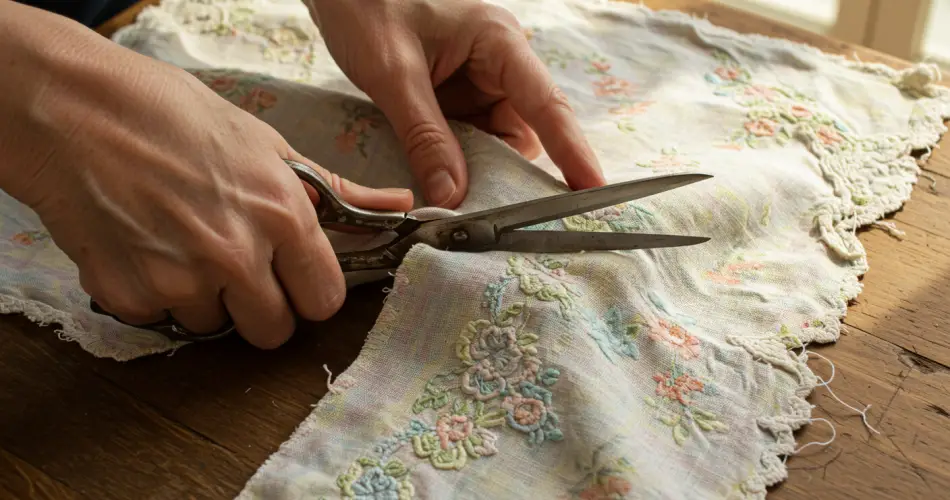In a world where waste is a growing concern, finding ways to reuse and recycle everyday items has become essential. Old tablecloths, often stained or worn beyond use for their original purpose, can be transformed into practical and beautiful new items with just a little creativity, some scissors, thread, and a willingness to experiment. Upcycling not only reduces waste but also encourages a mindset of sustainability, which can be a valuable lesson for children and adults alike.
Why Upcycling Old Tablecloths Matters
It’s easy to discard a tablecloth after years of use or when it becomes stained. However, creative recycling—or “upcycling”—allows you to give these fabrics a new life rather than sending them to a landfill. Beyond the environmental benefits, repurposing old tablecloths can result in unique, handmade items that add charm and personality to your home.
Teaching children how to transform worn or old fabrics into new items is particularly important. It nurtures creativity, encourages resourcefulness, and fosters an early appreciation for sustainability. A simple tablecloth can become a practical household tool or a stylish accessory with just a bit of ingenuity.
Transforming Old Tablecloths: Ideas and Projects
There are countless ways to breathe new life into old tablecloths. Here are several creative and practical ideas:
1. DIY Dish Towels
Households can never have too many dish towels, and old tablecloths are perfect for making them. Simply cut the fabric into suitable sizes, then sew the edges to prevent fraying. Using durable fabrics like cotton or linen ensures that the new dish towels are both functional and long-lasting.
2. Handmade Pouches and Clutches
If your tablecloth is made of elegant or decorative fabric, consider turning it into a stylish pouch or clutch. A sewing machine is useful for this project, and adding vintage-style buttons or other embellishments can make your creation truly unique. These pouches can be used for storing makeup, stationery, or as small, practical bags for outings.
3. Table Runners
When the tablecloth is too damaged to save entirely, creating table runners is an excellent option. Table runners can be made from long strips of fabric, and leftover patches can be sewn together for a patchwork effect. Adding lace or decorative trims enhances the look, giving a vintage or handmade charm to your dining table. Table runners are not only decorative but also functional, helping protect your table surface while adding a personalized touch.
4. Fabric Covers for Jars and Containers
Old tablecloths are ideal for making fabric covers for jars, particularly for homemade jams or preserves. Cut circles or squares slightly larger than the jar lids and secure them with ribbons or elastic bands. Not only do these covers protect the jars, but they also add a colorful and personalized element to your kitchen. Creative crafters can also make larger fabric lids for storage containers, turning everyday items into decorative pieces.
5. Decorative Cushions
For tablecloths that are in reasonably good condition and free of stains, you can create soft, decorative cushions. Simply cut two matching pieces of fabric, sew them together, and fill them with stuffing. You can adjust the size of the cushion based on the fabric available and your personal preference. Cushions made from upcycled tablecloths can brighten living rooms, bedrooms, or outdoor seating areas with unique patterns and textures.
6. Fashionable Skirts
Believe it or not, old tablecloths can even be transformed into one-of-a-kind skirts. Start by trimming the edges and rounding the corners, then create a hem. The waistband can be fitted with buttons, an elastic band, or both, depending on your preference. With careful cutting and sewing, a simple tablecloth can become a stylish and entirely original skirt. This project is particularly rewarding for those with sewing skills, as it combines creativity with practical use.
Tips for Successful Upcycling
-
Assess the fabric: Choose tablecloths that are durable and in good condition, avoiding heavily stained or torn fabrics unless the damaged parts can be cut away.
-
Plan your project: Measure and plan the dimensions before cutting to avoid wasting fabric.
-
Invest in quality tools: A sharp pair of scissors, a good sewing machine, and strong thread can make a big difference in the final result.
-
Mix and match: Don’t be afraid to combine multiple tablecloths or fabrics to create patchwork designs for runners, cushions, or other items.
-
Add decorative elements: Buttons, lace, ribbons, and embroidery can enhance the visual appeal of your upcycled creations.
Benefits of Upcycling Tablecloths
Upcycling old tablecloths offers numerous advantages:
-
Environmental impact: Reduces textile waste and promotes sustainable living.
-
Cost-effective: Creates new, functional items without spending money on new fabrics.
-
Creative expression: Allows you to experiment with design and develop unique pieces for your home or wardrobe.
-
Educational value: Teaches children and others about recycling, creativity, and the importance of caring for the environment.
-
Customization: Provides the opportunity to create items tailored to your taste, space, or personal style.
Conclusion
Old tablecloths don’t need to end up in the trash. With a little creativity, patience, and some basic sewing skills, they can be transformed into practical and stylish items such as dish towels, cushions, table runners, jar covers, pouches, or even clothing. Upcycling not only gives fabrics a second life but also encourages sustainable habits, reduces waste, and allows you to create personalized, handmade items for your home and family.
Whether you are an experienced crafter or a beginner, old tablecloths provide a versatile resource for creative projects. From functional household items to fashionable accessories, the possibilities are endless. Next time you find a worn or outdated tablecloth, remember that with a pair of scissors, some thread, and a bit of imagination, it can become something beautiful, practical, and environmentally friendly.



